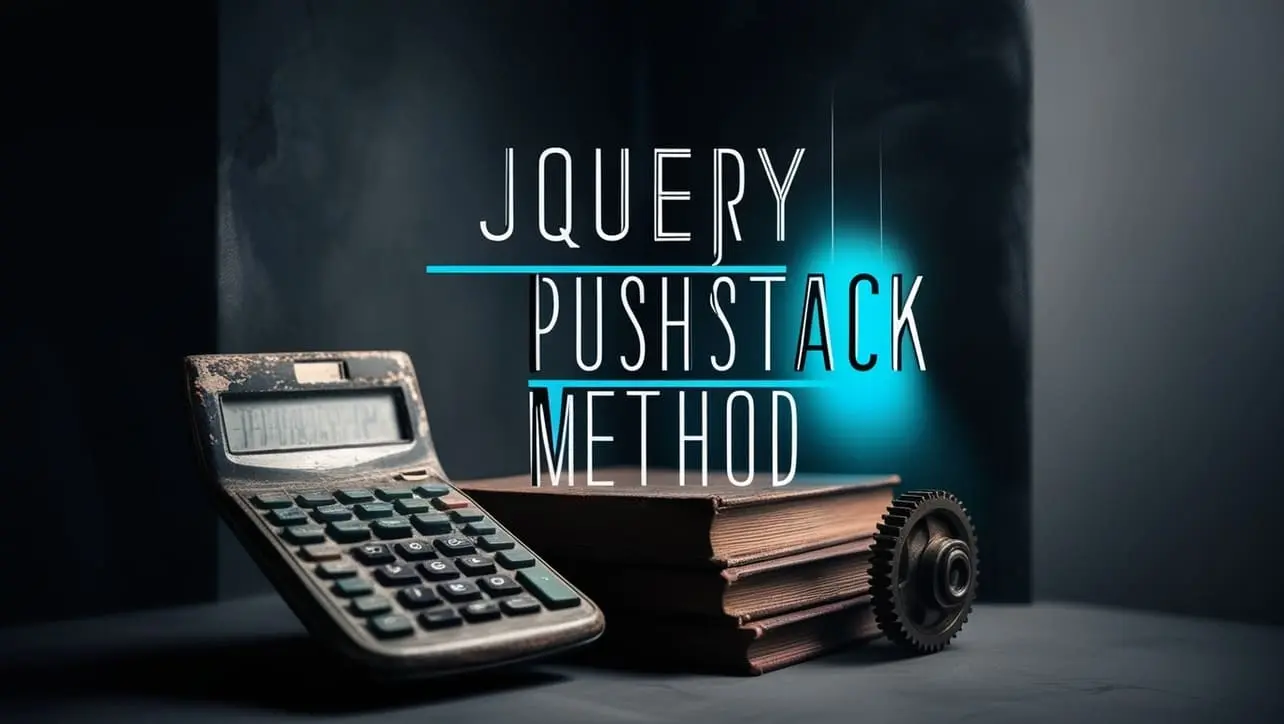
jQuery Topics
- jQuery Introduction
- jQuery Callbacks
- jQuery deferred
- jQuery selectors
- jQuery Ajax Events
- jQuery Ajax Methods
- jQuery Keyboard Events
- jQuery Keyboard Methods
- jQuery Form Events
- jQuery Form Methods
- jQuery Mouse Events
- jQuery Mouse Methods
- jQuery Event Properties
- jQuery Event Methods
- jQuery HTML
- jQuery CSS
- jQuery Fading
- jQuery Traversing
- jQuery Utilities
- jQuery Properties
jQuery .pushStack() Method

Photo Credit to CodeToFun
🙋 Introduction
jQuery is renowned for its versatility in simplifying web development tasks. Among its arsenal of methods, the .pushStack() method stands out for its ability to manipulate sets of DOM elements with ease.
In this comprehensive guide, we'll explore the intricacies of the .pushStack() method, providing clear examples to elucidate its functionality and practical applications.
🧠 Understanding .pushStack() Method
The .pushStack() method in jQuery is a powerful tool that allows you to manipulate sets of DOM elements by adding them onto a stack. This method is particularly useful when you want to chain jQuery methods or traverse through multiple sets of elements while maintaining a reference to the original set.
💡 Syntax
The syntax for the .pushStack() method is straightforward:
.pushStack( elements [, name [, arguments]] )Parameters:
- elements: The set of DOM elements to be added onto the stack.
- name (optional): A string representing a label for the stack.
- arguments (optional): Additional arguments to be passed to the stack.
📝 Example
Chaining Methods with .pushStack():
Suppose you have a set of paragraphs and you want to highlight them one by one using jQuery. You can achieve this by chaining the
.pushStack()method with the .css() method as follows:index.htmlCopied<p>Paragraph 1</p> <p>Paragraph 2</p> <p>Paragraph 3</p>example.jsCopied$("p").pushStack($("p").css("color", "red")).css("font-weight", "bold");This code will first set the color of all paragraphs to red and then make them bold.
Traversing Through Multiple Sets of Elements:
Let's say you have a list of items and you want to select both the list items and their parent lists. You can accomplish this using
.pushStack()along with the .parent() method:index.htmlCopied<ul> <li>Item 1</li> <li>Item 2</li> </ul> <ol> <li>Item A</li> <li>Item B</li> </ol>example.jsCopiedvar $items = $("li").pushStack($("li").parent());Now, $items contains both the list items and their parent lists.
Creating Named Stacks:
You can create named stacks for better organization and reference. For instance:
example.jsCopiedvar $stack = $("p").pushStack($("span"), "myStack");This creates a stack named myStack containing both paragraphs and spans.
🎉 Conclusion
The .pushStack() method in jQuery provides a convenient way to manipulate sets of DOM elements, enabling smoother chaining of methods and traversal through multiple sets while retaining references to the original elements.
By mastering its usage, you can streamline your jQuery code and enhance the efficiency of your web development projects.
👨💻 Join our Community:
Author

For over eight years, I worked as a full-stack web developer. Now, I have chosen my profession as a full-time blogger at codetofun.com.
Buy me a coffee to make codetofun.com free for everyone.
Buy me a Coffee












If you have any doubts regarding this article (jQuery .pushStack() Method), please comment here. I will help you immediately.